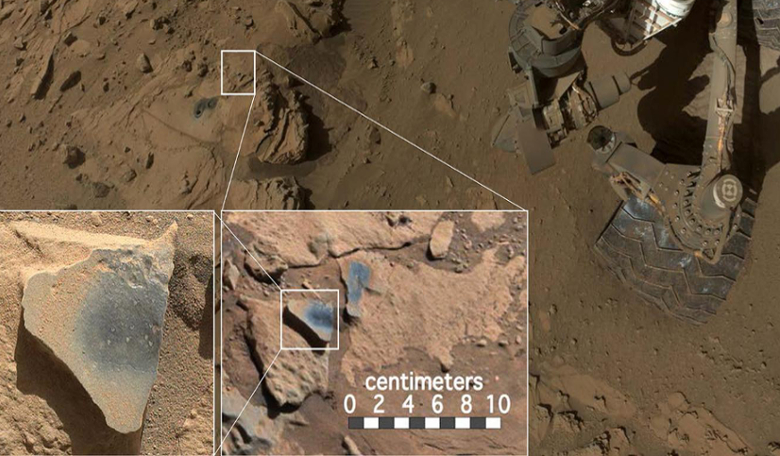The discovery of manganese oxides in Martian rocks found by NASA's Curiosity rover, indicate that higher levels of atmospheric oxygen once existed on the Red Planet, making it more Earth-like than previously thought.
Found by firing lasers from Curiosity's Chemistry and Camera (ChemCam) instrument onto the Martian surface, the oxides, along with a series of other substantial geological discoveries, help bolster the theory that groundwater was present in Gale Crater – the rover’s current study area. Nonetheless, these are not the first high manganese abundances to have been found. Similar deposits were also discovered by NASA's Opportunity rover thousands of miles from Curiosity, thus supporting the idea that the conditions needed to form these materials are perhaps widespread on the planet.
"The only ways on Earth that we know how to make these manganese materials involve atmospheric oxygen or microbes," said Nina Lanza, a planetary scientist at Los Alamos National Laboratory and lead author on the study published in the American Geophysical Union's journal. "Now we're seeing manganese-oxides on Mars and wondering how the heck these could have formed."
On Earth, the transformation from relatively low oxygen abundances to the oxygen-rich atmosphere we see today, is marked by the appearance of high concentrations of manganese oxide minerals in our geological record. Naturally, by seeing similar mineralogy on our neighbouring planet, would suggest that oxygen levels rose there, too, before declining to their present values. If true, how was that oxygen-rich environment formed?
Could microbes be the key to an increase in oxygen levels? Perhaps. It could also be the case that the Martian atmosphere simply contained more oxygen in its past than it does now. "These high manganese materials can't form without lots of liquid water and strongly oxidizing conditions. Here on Earth, we had lots of water but no widespread deposits of manganese oxides until after the oxygen levels in our atmosphere rose,” said Lanza.
It is possible that Mars’s atmosphere had an abundance of oxygen due to the planets weak magnetic field. Without a protective shield, ionising radiation would be able to penetrate the atmosphere and break water molecules down to its constituent parts; hydrogen and oxygen. As Mars' has a relatively low gravity, the heavier oxygen atoms remained behind and were sequestered into the rocks, leading to the rusty red dust that covers the surface today. The lighter hydrogen atoms on the other hand were lost from the planet.
All to often, an abundance of oxygen in a planetary atmosphere is attributed to potential signs of extant life, however, the breakdown of water molecules into oxygen and water does not require life to be present. "It's hard to confirm whether this scenario for Martian atmospheric oxygen actually occurred," Lanza added. "But it's important to note that this idea represents a departure in our understanding for how planetary atmospheres might become oxygenated."











